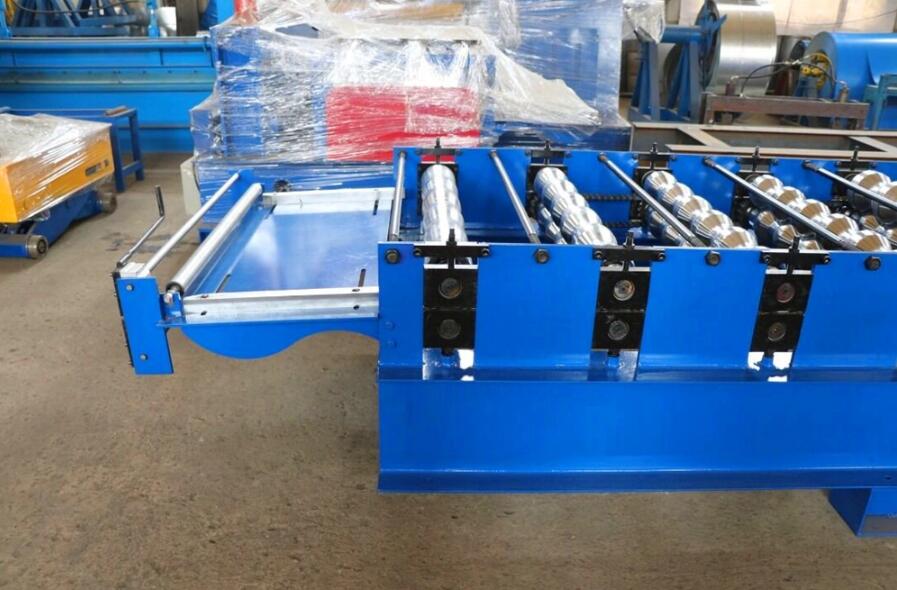Roof Panel Curving Equipment for Efficient Architectural Design and Construction Solutions
The Evolution and Importance of Roof Panel Curving Machines
In the world of construction and architecture, the design and functionality of structures significantly depend on the materials and techniques employed throughout the building process. Among these, roof panels play a vital role in ensuring the durability and aesthetics of a structure. Roof panel curving machines have gained prominence in recent years as essential tools for manufacturers and builders looking to create complex roof designs while maintaining high levels of efficiency and precision.
Roof panel curving machines are specialized equipment designed to bend and curve metal or other materials into various shapes and profiles. These machines allow for the creation of curved roof panels, which are increasingly sought after in modern architectural designs due to their unique visual appeal and functional benefits. The curvature of roof panels can enhance both the structural integrity and the aesthetic value of a building, allowing architects to explore innovative designs and configurations that push the boundaries of traditional construction.
One of the primary benefits of using roof panel curving machines is their ability to produce custom-curved panels that meet specific design requirements. This capability is instrumental for projects that require precise fitting and alignment, ensuring that each panel matches the overall geometry of the roof design. With the help of advanced computer numerical control (CNC) technology, modern curving machines can accurately replicate complex curves and radii, providing architects and builders with a level of precision that manual processes cannot achieve.
roof panel curving machine

Additionally, roof panel curving machines offer significant time and cost savings in the construction process. Traditionally, creating curved roof panels involved a labor-intensive process that required skilled craftsmen to manually shape the materials. This not only increased the time required for project completion but also led to higher labor costs and the potential for human error. By automating these processes, roof panel curving machines streamline production, allowing for rapid fabrication of panels without sacrificing quality. Consequently, builders and contractors can complete projects faster and more efficiently, ultimately leading to reduced costs and increased profitability.
The versatility of roof panel curving machines is another noteworthy advantage. These machines can work with various materials, including steel, aluminum, and other alloys, making them suitable for a range of projects, from industrial buildings to residential homes. Furthermore, they can accommodate different thicknesses and profiles, which allows for greater design flexibility. As architects continue to innovate and experiment with new shapes and materials, the importance of versatile curving machines will only continue to grow.
Moreover, the growing emphasis on sustainable construction practices has highlighted the role of roof panel curving machines in promoting energy efficiency. Curved roofs can improve the overall energy performance of a building by facilitating better airflow and reducing heat accumulation. This can lead to lower energy consumption for heating and cooling, making structures more environmentally friendly.
To sum up, roof panel curving machines represent a significant advancement in construction technology. Their ability to create custom-curved panels with precision and efficiency makes them indispensable for modern architectural designs. As the construction industry evolves and continues to embrace innovation, these machines will undoubtedly play a crucial role in shaping the future of building design, contributing to both aesthetic appeal and functional performance. Their widespread adoption signifies a shift towards more creative, efficient, and sustainable building practices, which are essential in an increasingly complex and environmentally conscious world.
-
Roof Panel Machines: Buying Guide, Types, and PricingNewsJul.04, 2025
-
Purlin Machines: Types, Features, and Pricing GuideNewsJul.04, 2025
-
Metal Embossing Machines: Types, Applications, and Buying GuideNewsJul.04, 2025
-
Gutter Machines: Features, Types, and Cost BreakdownNewsJul.04, 2025
-
Cut to Length Line: Overview, Equipment, and Buying GuideNewsJul.04, 2025
-
Auto Stacker: Features, Applications, and Cost BreakdownNewsJul.04, 2025
-
Top Drywall Profile Machine Models for SaleNewsJun.05, 2025








